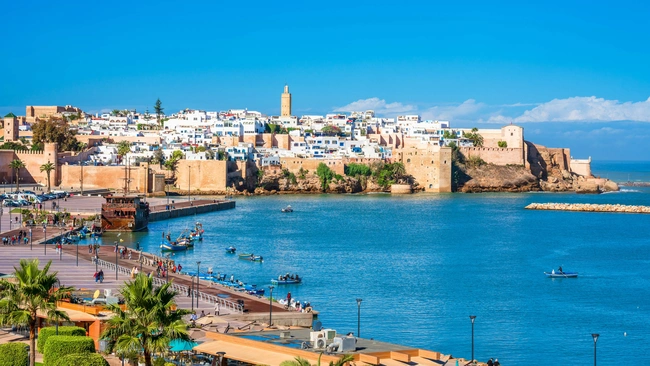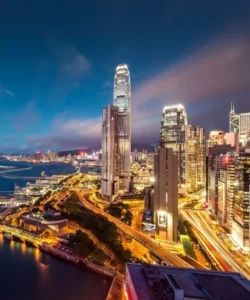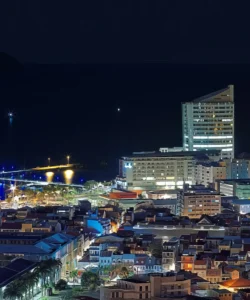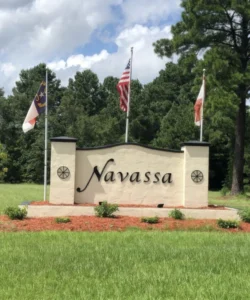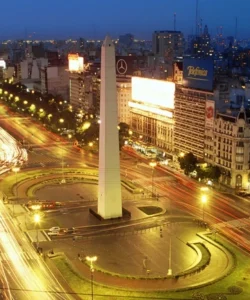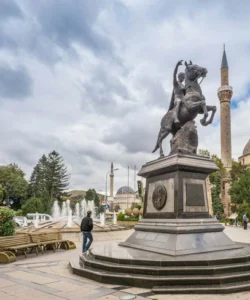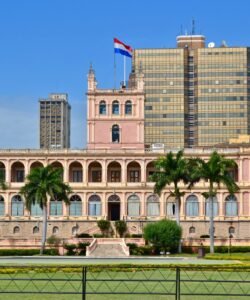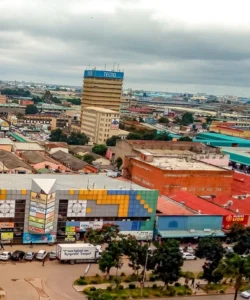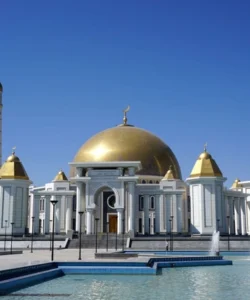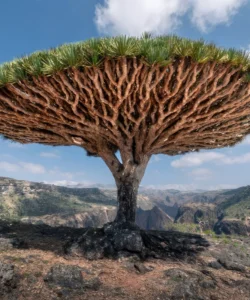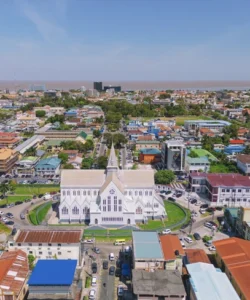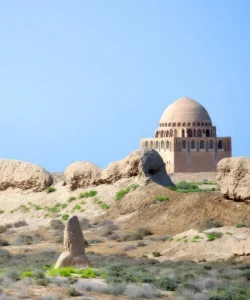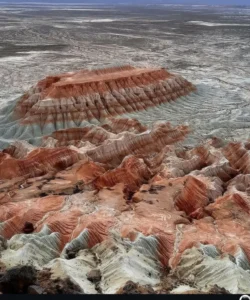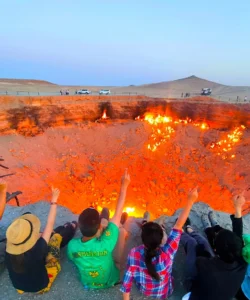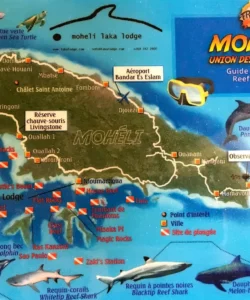Morocco is a country in North Africa with a coastline on both the Atlantic Ocean and the Mediterranean Sea. It is a land of diverse landscapes, from the Sahara Desert to the High Atlas Mountains, and a rich culture that is a blend of Arab, Berber, and European influences.
![]()
Area & Population:
Morocco spans an area of approximately 446,300 km² (172,300 sq mi) or 710,850 km² (274,460 sq mi) if including the disputed territory of Western Sahara. Its population is roughly 37 million (2023 est.).
Capital & Major Cities:
The capital city is Rabat, with an urban population of approximately 580,000 and a metropolitan population of over 1.2 million. Other major cities include Marrakech, Fes, Casablanca, and Tangier.
Language:
The official languages of Morocco are Classical Arabic and Berber (Tamazight). Moroccan Arabic, known as Darija, is the informal everyday language, incorporating words from French, Arabic, and Berber. French is also widely spoken, particularly in commerce and education.
Currency:
The official currency is the Moroccan Dirham (MAD), subdivided into 100 centimes.
Religion:
The predominant religion in Morocco is Islam (Sunni Islam, accounting for 99% of the population). There are also smaller communities of Christians, Jews, and Baháʼí Faith followers.
Attractions & Wonders:
Morocco boasts a wealth of attractions, from ancient medinas to stunning natural landscapes:
- Imperial Cities: Explore the historic medinas and vibrant souks of Marrakech (Jemaa el-Fnaa, Bahia Palace, Jardin Majorelle), Fes (Medina of Fez, Madrasa Ben Youssef), Rabat (Hassan Tower, Chellah), and Meknes.
- Natural Wonders:
- Atlas Mountains: Offering breathtaking landscapes, hiking opportunities, and Berber villages. Tizi n’Tichka Pass and Tizi n’Test Pass are notable routes.
- Sahara Desert: Experience the vast golden dunes of Merzouga, camel treks, and stargazing.
- Ouzoud Waterfalls: Impressive cascades in the Atlas Mountains.
- Todra Gorge: A stunning red-rock canyon popular for hiking and rock climbing.
- Crocoparc (Agadir): A unique botanical park home to over 300 Nile crocodiles.
- Coastal Towns: Essaouira, with its windy beaches and historic medina, and Tangier, offering a blend of European and Moroccan culture.
- Chefchaouen: The “Blue City” in the Rif Mountains, famous for its distinctive blue-painted buildings.
- Hassan II Mosque (Casablanca): A magnificent mosque with a retractable roof and intricate details.
- Ait Benhaddou: A UNESCO World Heritage site, this ancient fortified village (kasbah) is a stunning example of traditional Moroccan architecture and a popular filming location.
Architecture:
Moroccan architecture is a captivating blend of Islamic and Hispano-Moorish influences, characterized by:
- Arches, Domes, and Minarets: Iconic features, particularly the graceful horseshoe arch.
- Zellij: Intricate ceramic-tile mosaics in vibrant colors, often adorning walls and fountains.
- Geometric Patterns and Calligraphy: Elaborate decorative elements inspired by Islamic art.
- Riads: Traditional Moroccan houses with open courtyards and lavish gardens, providing private and relaxing spaces.
- Kasbahs: Fortified cities or strongholds built for defensive purposes, often blending seamlessly with their natural surroundings due to their use of local materials.
Roads:
Morocco has a developing road network connecting its major cities and tourist destinations. Notable scenic routes include:
- Fes to Marrakech: A diverse road trip showcasing changing landscapes from forests to desert and the Atlas Mountains. Key stops include Ifrane, Merzouga, Ouarzazate (and Ait Benhaddou), and the Tizi n’Tichka Pass.
- Azemmour to Oualidia: A coastal route with charming fishing villages and sea views.
- Tizi n’Test Pass: A winding mountain route connecting Taroudant to Marrakech through the High Atlas Mountains.
- Chefchaouen to Akchour: A short, scenic drive through the Rif Mountains to a beautiful nature spot.
- Agdz to M’Hamid: A Saharan Gateway Drive offering glimpses into Morocco’s desert soul, with oases and kasbah ruins.
Hotels & Accommodations:
Morocco offers a wide range of accommodations, from luxurious hotels to charming boutique riads and unique desert camps:
- Riads: Staying in a Riad is a quintessential Moroccan experience, offering traditional architecture, serene courtyards, and personalized service. Examples include Dar Kawa, Ryad Dyor, and Riad Farnatchi in Marrakech.
- Boutique Hotels: Often showcasing local design elements and offering a more intimate atmosphere, such as Berber Lodge.
- Desert Camps: For an unforgettable Sahara experience, luxury desert camps provide comfortable tents, traditional meals, and stargazing opportunities.
Restaurants & Cuisine:
Moroccan cuisine is renowned for its aromatic spices, fresh ingredients, and diverse flavors. Staple ingredients include couscous, olives, preserved lemons, lamb, chicken, and a variety of seasonal vegetables.
- Must-try Dishes:
- Tagine: A slow-cooked stew named after the distinctive conical clay pot it’s cooked in. It can feature various meats (lamb, chicken) or be vegetarian, often with dried fruits, vegetables, and spices like saffron, cumin, cinnamon, and ginger.
- Couscous: A staple dish often served with meat and vegetables, and sometimes topped with sweet elements like caramelized onions and raisins (tfaya).
- Pastilla (Basteeya/Bestilla): A savory-sweet pastry, often made with pigeon or chicken, almonds, and spices, dusted with powdered sugar and cinnamon.
- Tanjia: A slow-cooked lamb dish, traditionally prepared in a clay urn.
- Rfissa: A hearty dish made with shredded msemen (flatbread), lentils, fenugreek, and chicken.
- Khobz: A round, crusty bread that accompanies almost every meal.
- Mint Tea: The national drink, a symbol of Moroccan hospitality.
- Notable Restaurants (examples):
- Rick’s Cafe (Casablanca): Famous for its connection to the movie “Casablanca.”
- La Sqala (Casablanca/Rabat): Offers Moroccan charm and modern sophistication.
- Al Fassia Aguedal (Marrakech): Known for high-quality Moroccan and international cuisine.
- Dar Zellij (Marrakech): A traditional Moroccan restaurant with beautiful decor.
- Comptoir Darna (Marrakech): Offers a festive atmosphere, delicious cuisine, and entertainment.
- Le Dhow (Rabat): A captivating dining experience on Rabat’s waterfront.
- Hotel L’Iglesia (various locations): Often offers memorable culinary journeys.
